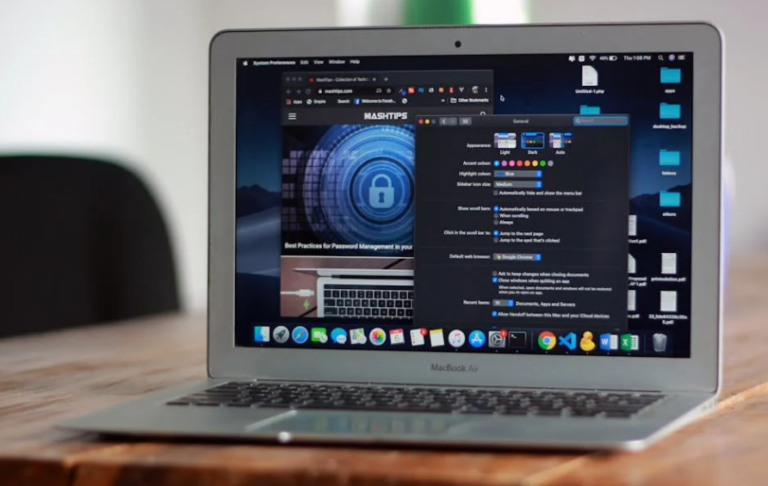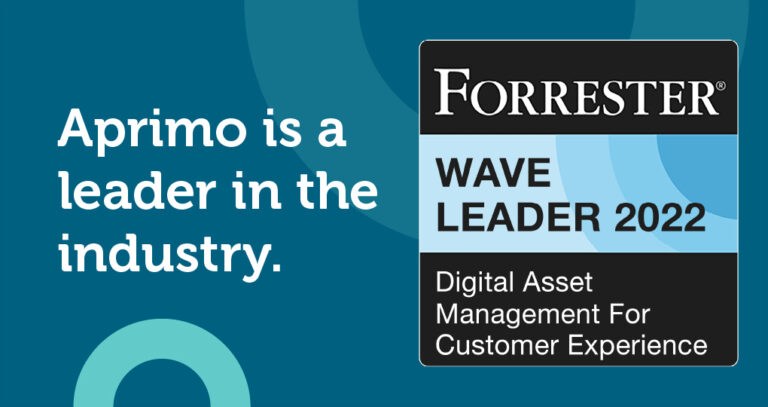Security and Compliance in Digital Asset Management

Digital asset management security is crucial for businesses that store valuable digital content and customer data. The need for compliance measures is ever-growing, with regulations like GDPR, CCPA, and HIPAA setting high standards for data protection.
However, organizations face continuous threats from security risks, such as unauthorized access and data breaches. According to a 2023 report by Cybersecurity Ventures, global cybercrime costs are projected to reach $10.5 trillion annually by 2025, underscoring the critical need for robust digital asset management and cybersecurity measures.
To address these challenges, companies must focus on secure digital asset management, ensuring all digital content is properly protected and compliant with relevant regulations.
Managing digital content effectively means not just storing files but ensuring that sensitive data is kept safe and accessible only to authorized personnel. Implementing robust digital asset management security practices mitigates potential risks, preserving the organization’s reputation and financial stability.
Understanding Digital Asset Management Security
Digital asset management (DAM) security is essential for protecting valuable content and ensuring business continuity. Whether safeguarding sensitive customer data in marketing assets, protecting proprietary product designs, or managing licensed content for a global campaign, securing digital assets helps prevent unauthorized access, data breaches, and costly compliance issues.
For example, a company storing confidential financial reports needs to know these files are accessible only to authorized users, while a healthcare organization must protect patient information under strict regulatory standards.
With the rise in cybercrime and data vulnerabilities, secure DAM systems are more critical than ever. They offer organizations peace of mind and the assurance that their content remains safe and compliant.
Key Security Features
Encryption
Encryption is a core security feature in DAM platforms, protecting assets by encoding them in a way that makes them unreadable to unauthorized users. It adds a layer of security to ensure that even if files are accessed by someone without permission, they remain protected and inaccessible.
Encryption transforms asset data into a secure code during storage (at rest) and while it’s being shared across networks (in transit), so only authorized users with the correct decryption keys can view the content.
For example, consider a healthcare organization that stores patient education videos and confidential medical records in its DAM. With encryption, these files are secured, making it nearly impossible for anyone without access privileges to view or tamper with the data. Similarly, a media company that distributes licensed video content to various partners can confidently share assets across networks, knowing that encryption safeguards their intellectual property, even if files are intercepted.
DAM encryption operates automatically, often in the background, reducing the risk of human error while enhancing asset security. This feature plays a crucial role in compliance as well, helping organizations adhere to data protection regulations like HIPAA or GDPR.
By encrypting assets in a DAM, companies can mitigate security risks, maintain the integrity of their digital assets, and build trust with their stakeholders, knowing that sensitive content remains safe and private at every step.
Authentication and Access Management
Authentication and access management are essential features in DAM systems, providing a robust framework to control who can access, view, or edit digital assets. These features ensure that only authorized users can interact with specific files, which protects sensitive content and maintains brand consistency.
Authentication verifies each user’s identity, while access management assigns permissions based on roles or specific needs, allowing organizations to secure their assets effectively without limiting accessibility for the right users.
In a DAM system, authentication typically involves requiring users to log in with secure credentials, often combined with multi-factor authentication (MFA) for added security. For example, a global retail company using a DAM to manage seasonal marketing assets might implement MFA to confirm the identity of each user before granting access, reducing the risk of unauthorized entry by requiring a second form of verification, such as a mobile code.
Access management allows administrators to define who can view, edit, or download specific assets, tailoring permissions based on roles or departments. For instance, a fashion brand’s DAM might allow the marketing team access to promotional images but restrict editing permissions to the design team. This setup ensures that assets are used appropriately without risking unintended changes or misuse. Additionally, access management can help enforce compliance by limiting visibility for sensitive assets, such as unreleased product photos, to only the essential personnel.
Through these authentication and access management tools, DAM systems provide a secure, structured environment for digital assets. They ensure that the right people have access to the right content while keeping unauthorized users out. Controlled accessibility strengthens overall security and fosters a streamlined, collaborative workflow across teams.
Access Control
Access control in digital asset management is vital for ensuring that only the right users have access to specific assets, enabling organizations to maintain security and proper asset usage across teams. By setting permissions based on roles, projects, or departments, access control helps streamline workflows, as each user can see and work with only the content relevant to their responsibilities.
Controlled user access also reinforces brand consistency and compliance by limiting access to sensitive or brand-critical files, preventing accidental misuse and keeping assets secure and organized within the DAM platform.
Compliance Regulations
Organizations must adhere to compliance regulations in digital asset management, especially as they handle increasing volumes of personal, sensitive, and protected information. Adherence is essential for maintaining data privacy, ensuring secure asset usage, and protecting user rights. Failing to comply can result in severe fines and reputational damage, making it imperative for companies to integrate DAM solutions that support regulatory requirements.
Below, we’ll explore how three major regulations—GDPR, HIPAA, and CCPA—impact digital asset management practices and the essential features DAM systems must have to support compliance.
GDPR (General Data Protection Regulation)
The GDPR is a European Union law that governs the handling of personal data, applying to any organization that processes data from EU citizens, regardless of where the company is based. DAM systems that store or manage content containing personal data, like customer images or user information, must comply with GDPR’s stringent requirements for data security, user consent, and right to access.
This regulation requires DAM platforms to allow users to view, delete, or update their data upon request, ensuring transparency and control. Additionally, GDPR mandates that data breaches are promptly reported, which means DAM systems need audit trails and reporting features to track access and modifications of personal assets.
HIPAA (Health Insurance Portability and Accountability Act)
HIPAA sets guidelines for handling sensitive patient information in the United States, specifically applying to healthcare providers, insurers, and related businesses. For DAM systems that store patient records, images, or any health-related content, HIPAA compliance is vital.
DAM platforms must offer stringent access controls, encryption, and audit capabilities to protect patient privacy and ensure that only authorized personnel can view or manage healthcare data. For example, a healthcare provider using a DAM to store medical imaging would need to implement restricted permissions and logging features to monitor access and meet HIPAA’s security requirements.
CCPA (California Consumer Privacy Act)
The CCPA is a U.S. state law that grants California residents rights regarding the collection, storage, and sale of their personal data. While it primarily impacts companies doing business with California residents, its principles are increasingly relevant for privacy standards nationwide.
DAM systems managing consumer data, such as marketing assets that include customer demographics or behavioral insights, must comply with CCPA requirements by allowing users to opt out of data sharing and by providing transparent data collection practices. A DAM solution designed for CCPA compliance should offer features that support data access requests and enable the anonymization or deletion of personal information upon user demand.
Each of these compliance regulations imposes specific requirements that impact how digital assets are managed and protected within a DAM system. By incorporating compliance-focused features, DAM solutions help organizations navigate these complex regulations, ensuring that digital assets are both secure and compliant in a dynamic regulatory landscape.
Benefits of Secure Digital Asset Management
Implementing secure digital asset management offers organizations crucial protections, helping them safeguard valuable content and enhance confidence in asset handling across teams and stakeholders. Let’s explore how secure digital asset management can improve collaboration and mitigate risks.
Improved Collaboration
Secure digital asset management fosters better teamwork by providing centralized storage. All your digital files, from images to videos, are stored in one place. No more hunting through emails or different drives to find what you need.
Brand consistency is another big plus. With a centralized system, everyone uses the same, up-to-date assets, ensuring that your brand message is always on point across all platforms.
Operational efficiency skyrockets when teams can access and share files seamlessly. Secure sharing capabilities allow you to share assets with colleagues or partners without worrying about unauthorized access. Version control keeps track of changes and ensures everyone is working with the latest version of a file.
Metadata tagging further improves collaboration by making assets easy to find. Tags allow users to quickly search and retrieve files, saving time and reducing frustration.
Risk Mitigation
Risk mitigation involves a combination of data protection, audit trails, and vulnerability assessments to reduce potential threats and ensure assets remain secure. Data protection features like encryption and access controls prevent unauthorized access, keeping sensitive information safe from breaches.
Audit trails track user actions, providing a clear record of who accessed, modified, or shared assets, which is invaluable for accountability and compliance. Regular vulnerability assessments further enhance security by identifying potential weaknesses within the system, allowing organizations to address risks proactively.
Together, these elements contribute to a secure DAM environment, helping organizations manage digital assets with confidence while minimizing exposure to security risks.
Implementing Best Practices for Security and Compliance
Implementing best practices in digital asset management security is key to safeguarding your organization’s valuable assets. Here are some essential strategies that can help you maintain security and compliance.
Role-Based Access
One of the most effective ways to secure your digital assets is through role-based access control. Assign permissions based on roles rather than individuals, ensuring that users only have access to the information necessary for their job functions.
Data Backups and Disaster Recovery
Regular data backups protect your digital assets against data loss due to hardware failures, cyberattacks, or other unforeseen events. Storing backups in multiple locations adds an extra layer of protection. Equally important is having a solid disaster recovery plan. Your plan should outline the steps to restore your system after a catastrophic event. Make sure to train your team and test the plan regularly to ensure its effectiveness.
User Training and Awareness
Despite having strong technical measures in place, human error remains a leading cause of data breaches. User training and awareness programs help mitigate these risks. Educate employees about phishing risks, the importance of password security, and how to use proper reporting channels for suspicious activities. Periodic refresher courses and simulated attack exercises can keep your team vigilant and informed about emerging threats.
Regular Security Audits
Conducting regular security audits and risk assessments is essential for identifying vulnerabilities in your system. Evaluations should cover software configurations, access controls, and data encryption methods. Addressing identified weaknesses promptly through patch management and software updates can prevent potential security breaches and ensure your system remains secure.
Protect Your Digital Assets With a DAM Platform Focused on Security and Compliance
Digital asset security and compliance are essential to safeguarding brand integrity and meeting regulatory requirements. A robust digital asset management system offers various features designed to protect content from unauthorized access, support data privacy standards, and ensure legal compliance across industries.
A secure DAM system helps mitigate risks and maintain asset integrity with tools like access controls, encryption, audit trails, and vulnerability assessments. This allows organizations to confidently focus on creative and strategic goals.Aprimo is an ideal solution for organizations seeking a comprehensive DAM platform that prioritizes both security and compliance. Built with advanced features to support data protection, regulatory adherence, and streamlined workflows, Aprimo empowers companies to manage their digital assets securely and efficiently. Book a demo today and see how Aprimo can help protect your valuable content.
Frequently Asked Questions
How can organizations ensure compliance with data protection regulations in DAM?
Organizations can maintain compliance by choosing a DAM solution with features meeting data protection regulations, including role-based access controls, encryption, data retention and deletion policies, and audit trails. Regular security audits and risk assessments help identify and address compliance gaps.
Are there any specific tools or software solutions designed to enhance DAM security?
Yes, some digital asset management solutions include multi-factor authentication plugins, encryption modules, advanced firewalls, or integrated security information and event management (SIEM) systems for real-time threat analysis.
What role does user training play in maintaining security and compliance in DAM systems?
User training is essential for DAM system security and compliance. Even advanced security features can fail due to human error or ignorance. Regular training on data handling best practices, secure passwords, recognizing phishing attempts, and reporting security incidents helps users understand compliance requirements for their roles, reducing accidental regulation violations.




